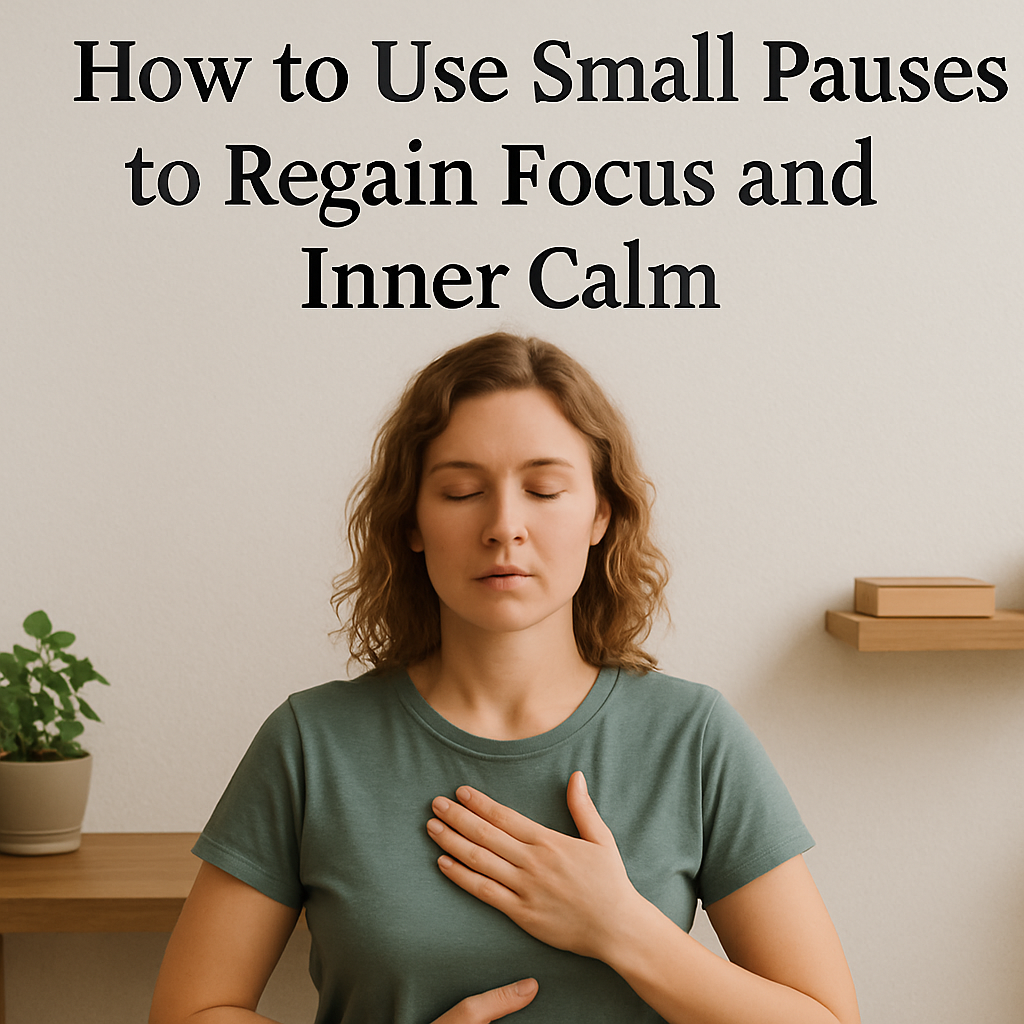In today’s hyperconnected world, the pace of life often feels relentless. Between work demands, social obligations, and constant digital noise, it’s easy to become mentally scattered and emotionally drained. But the solution isn’t always taking a vacation or a day off — sometimes, all you need is a pause. A brief moment of stillness, taken with intention, can reset your nervous system, sharpen your focus, and help you reconnect with yourself.
The Power of a Pause
A pause is more than just a break — it’s an opportunity to come back to the present moment. It’s a shift away from autopilot. When we pause, even for just one minute, we stop reacting and begin responding. Pauses interrupt stress patterns, slow racing thoughts, and create emotional space for clarity and calm.
Signs You Need a Pause
- You feel overwhelmed or mentally foggy
- You’re reacting emotionally rather than thoughtfully
- Your body feels tense or fatigued
- You’re jumping from task to task without finishing anything
- You feel disconnected from yourself
Learning to recognize these signals early allows you to reset before burnout takes over.
Micro-Pauses: Quick, Impactful Breaks
Micro-pauses are intentional breaks that last between 30 seconds and 5 minutes. You can integrate them naturally into your daily flow:
- Take three deep breaths before opening an email
- Look away from your screen and focus on an object or the sky
- Stretch your shoulders and neck every hour
- Close your eyes and check in with your body for 60 seconds
These small breaks require almost no time but offer real benefits for focus and emotional regulation.
Mindful Movement Breaks
Movement is one of the fastest ways to shift energy. A 2-minute walk, light stretching, or even standing up and rolling your shoulders can help release built-up tension. Set a timer every 90 minutes to remind yourself to move. You’ll return to your work more centered and energized.
Breath Pauses
When stress builds, your breath becomes shallow and fast. Use that as a cue to pause. Try this technique:
- Inhale deeply through your nose for 4 seconds
- Hold for 4 seconds
- Exhale slowly through your mouth for 6–8 seconds
- Repeat for 2–3 rounds
You’ll feel calmer and more focused within minutes.
Digital Detox Pauses
Screens are a major source of overstimulation. Step away from devices regularly — even if just for 5 minutes every couple of hours. Put your phone down, close your laptop, and simply sit, walk, or look out the window. Give your brain a chance to rest from constant input.
Reflection Pauses
Use pauses to check in with yourself emotionally. Ask:
- How am I feeling right now?
- What do I need in this moment?
- What can I let go of today?
This self-inquiry builds emotional intelligence and prevents emotional buildup that can lead to stress or outbursts.
Transition Pauses
Pause intentionally between activities. Before switching from work to personal time, from one meeting to another, or from day to night, take 1–2 minutes to reset. These transition pauses help your brain release the last task and prepare for the next, reducing mental clutter.
Create a Culture of Pausing
If you lead a team or work with others, normalize pauses. Encourage short breaks, quiet moments before meetings, or check-ins that include breathing space. A workplace that respects the need for pauses tends to be more focused, creative, and emotionally healthy.
Final Thought: Stop, Breathe, Begin Again
You don’t have to wait until you’re exhausted to take care of yourself. The simple habit of pausing — even for a few seconds — can transform how you move through your day. It gives you back your presence, your power, and your peace. In the space between stimulus and response, there is freedom. Use it. Pause often. Return to yourself.
